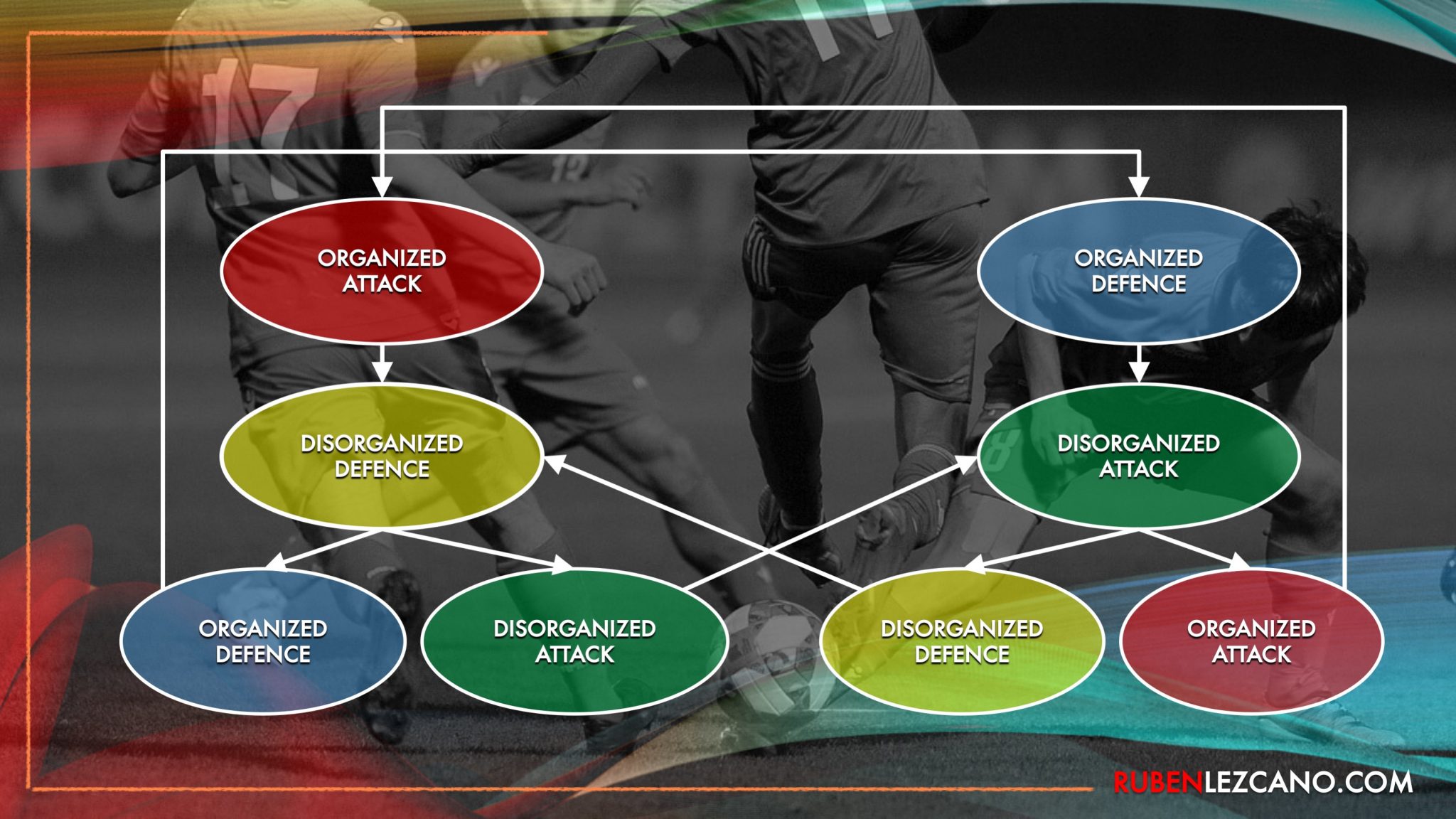GAME MODEL
PHASES OF THE GAME

In general lines we can affirm that the majority of coaches coincide when pointing out that the singular phases or moments in which a soccer match can be divided are four: Attack; Defence; Transition from Attack to Defense; and Transition from Defense to Attack. However, in this article we will use a different terminology to refer to these phases:
- Attack : Organized Attack
- Defense : Organized Defense
- Transition Attack-Defense : Disorganized Defense
- Transition Defence-Attack : Disorganized Attack
Whenever a team has the ball it is in attack and in defense when it doesn´t have it. The moments of change between possessing and not possessing the ball and vice versa is what we call transitions. In soccer, there have been many coaches who have pointed out the importance of these moments due to their crucial importance in the game.

José Mourinho:
“Transitions have become crucial. When the opponent is defensively organized, it is very difficult to score. The moment the opponent loses the ball there is an opportunity to find someone out of his position. Similarly, when we lose the ball, we must react immediately. Everyone says that team play wins games, but I think it’s more about transitions”.
Diego Simeone:
“When I returned to Madrid, I said that I wanted to rediscover the essence of the club: a team that was always aggressive, intense, competitive, counterattack, vertical. And that’s why we implemented this style of play from the first day we arrived”.
Pep Guardiola:
«I want my players to chase the ball as the dogs follow the bones (referring to pressure after loss). You can’t be brilliant individually or collectively if you disappear when your team doesn’t have the ball. It is impossible. Soccer is a connection between what you have with the ball and without the ball”.
Claudio Ranieri:
“Some people complain that Leicester loses too many balls. But that is natural when your team plays at the speed of light. I give my strikers the freedom to attack and cross the lines, as long as they immediately return to a 1-4-4-2 as soon as the ball is lost”.
Why are transitions so important? Very simple, because there are more possibilities of scoring a goal in a disorganized attack than in an organized attack, and because there are more possibilities of conceding a goal in a disorganized defense phase than in an organized defense phase. Understanding the reason why this happens is essential for any coach when designing their game model.








